Search Results

Kimberlee
On December 29, 2023, my life took an unexpected turn. My family and I were traveling to California for the holidays when, during takeoff back to Georgia, I felt a sudden pop in my chest as the cabin pressure changed. I was immediately struck by intense pain, unable to move or catch my breath. Determined to hold on until we landed, I braced myself through the agony.
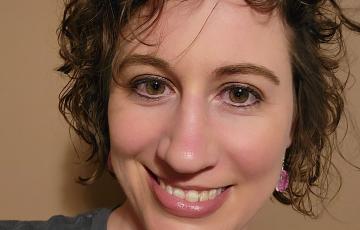
Kimberly
In October of 2020, I became sick with a sinus infection. After a 10-day dose of antibiotics, I was still sick, and the doctor gave me a stronger dose of antibiotics. Once I finished the five-day dose, I felt better, but every day I had a headache. After 28 days of continuous headaches, I decided to call the doctor again and let him know. It was a Friday, and he was off, so I was told to wait until the following Monday. Over the course of the weekend, I developed another sinus infection and lesions on my body, including on my uvula.

Jonathan
I’ll start from the beginning.
In 2012, I was diagnosed with testicular cancer. I had surgery to remove the mixed germ cell tumor and then was on the road to recovery. My lymph nodes were larger than they should have been, so I opted to err on the side of caution and had a lymph node dissection to have them removed. That was an invasive surgery that kept me out of work and from doing any physical activity for over six months. Once I healed up, I went back to work as a full-time police officer in Worcester, MA.
Subaru Loves to Care
The Leukemia & Lymphoma Society (LLS) is partnering with Subaru and its retailers to spread hope, love, and warmth to blood cancer patients and their families for the sixth consecutive year. As part of Subaru Loves to Care, we’re providing information on free education and support services from LLS to those fighting blood cancers across the country.
Healthy Eating
People living with cancer may have different nutrition goals and challenges, depending on their:
Managing Insurance and Expenses During Illness
It's important to resolve financial issues before they become a source of increased stress or limit your access to needed treatments, prescription medications or support services. Therefore, discuss payment options with members of your healthcare team or the treatment centers' patient financial services department. Patients and providers can work together to devise ways to reduce costs without compromising treatment. Ask your providers about:
Caring for Your Child During Treatment
Preparing the HomeThe following changes to your home may make life easier and safer for you and your child:
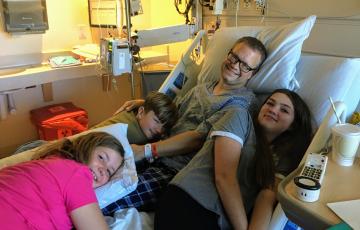
Lori
When my husband Ken was first diagnosed and treated for AML it felt like we were trapped in a fierce storm and being tossed about in a fury of wind. My husband Ken was diagnosed with AML (acute myeloid leukemia) and received intense treatment, spending a total of 120 days in the hospital in 2019, culminating in a bone marrow transplant (BMT). We are so grateful that his only sibling was a viable match as many patients struggle for years searching for a donor.
Are Clinical Trials Safe?
U.S. clinical trials are designed to give patients the safest, potentially most effective clinical therapies. Clinical trials are conducted once researchers have shown in the laboratory and in animal research that a particular study treatment has a good chance of offering better outcomes for people with a specific disease.
Patients enrolled in cancer clinical trials are never treated as “guinea pigs.” In fact, patients are given either
Peripheral Neuropathy
Cancer treatment, or sometimes the disease itself, can cause peripheral neuropathy (PN) — damage to nerves of the peripheral nervous system, which transmits information from the brain and spinal cord to every other part of the body. Peripheral neuropathy can be caused by:
Long-Term and Late Effects For Cancer Survivors
Blood cancer survivors don't always have serious long-term or late effects of treatment. For those who do, some long-term effects, such as fatigue, can linger for months or years after therapy. Late effects, such as medical conditions like heart disease and other cancers, don't appear until years after treatment ends. Effects can range from mild to severe.
Talk with your doctor about possible long-term and late effects. Your risk for developing long-term or late effects can be influenced by your:
Home Care
You don't necessarily need to depend on inpatient medical facilities to meet all your healthcare needs. If your condition allows, you can get the quality care you need at home and avoid the inconveniences of hospitals, nursing homes and rehabilitation facilities.

Jamie
After he was diagnosed with blood cancer in 2013, Jamie was told by doctors that he’d never walk again, let alone ride a bike. Despite those predictions, he finished a 540-mile ride in June 2019 to raise money for The Leukemia & Lymphoma Society (LLS).

Shelley
I went from being in the best shape of my life to battling cancer in only a few short months.
Three years ago, I made the choice to change my lifestyle, and I lost 100 lbs., which I can honestly say has saved my life. Prior to my cancer diagnosis, I was sharing my weight loss journey online to help others make positive choices. Little did I know that I was about to fight the biggest battle of my life!
Alyssa
My story begins with a diagnosis of hypothyroidism but they noticed something unusual with my white blood cell count, which was elevated but I had no infection. Further tests revealed that it was lymphoma. My initial diagnosis was incorrect so I went for a second opinion at the University of Kansas Cancer Center. They performed extensive bloodwork and my official diagnosis was primary splenic marginal zone lymphoma (SMZL).

Harper
In the late summer of 2021, 8-year-old Harper returned to in-person school for the first time since March 2020 for the start of third grade. Shortly after the beginning of the school year, Harper began to complain of headaches and bone pain and would fall deeply asleep each afternoon after school. Her pediatrician chalked it up to the rigors of in-person learning, wearing a mask all day, and indicated that a lot of children were experiencing similar symptoms.
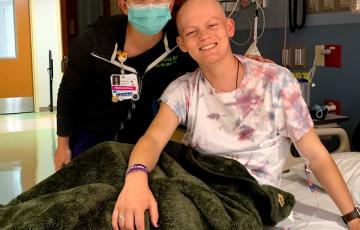
Seth
It was in my sophomore year at the University of Colorado Colorado Springs right around March 2021 when I first discovered the lump in my neck. I was simply doing homework at my desk, and my hand unconsciously brushed against my neck. I stopped and started to feel the unusual lump in my neck.
Soon after that, the tests started.
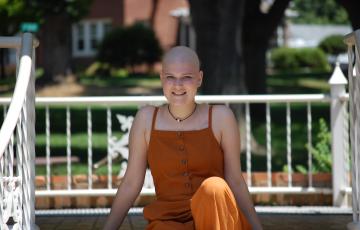
Samantha
Hi, I’m Samantha, and I am a pre-B-cell acute lymphoblastic leukemia survivor (B-ALL)! I was diagnosed in October 2018, the beginning of my junior year in high school. Before being diagnosed, I missed about a month of school due to being sick. I was misdiagnosed three times before they found out I had B-ALL. When I was diagnosed, the doctors told my parents and me that if it had been undiagnosed for a day or two more, I wouldn’t have woken up, and my parents would’ve found me. I’m so lucky it was found before it was too late.
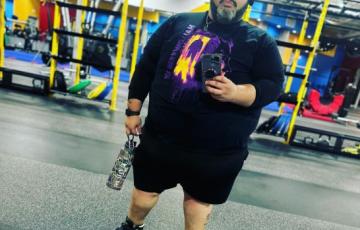
Mario
I’m a very simple guy. I’ve worked in the financial industry for almost 10 years, however, my passion is cooking. In 2019, I had just lost 225 lbs. I was preparing to go back to culinary school.
There was a family incident in March of that year, and it put a lot of stress on us. I kept developing a strong workout routine to really help me get on the right track.
Eliot
It was my senior year of high school, and I was thriving: MVP of the soccer team that went to the state finals; strong academics with an offer to study Natural Sciences at Durham University, one of England’s finest; fantastic friends who were to become even more important to me. My biggest challenge was getting a date for the prom! Things that were within my control were going really well. However, things outside of my control then flexed their powerful muscles, and that high school life ended and a new one began.

Anthony
December of 2017 was a difficult time for me. It is the month that is usually filled with happiness, excitement and Christmas cheer. For me, it was the month I found out that I had Hodgkin lymphoma. It’s crazy when you think about it – we see all of these facts and figures about people who are diagnosed with cancer and we never, really, truly believe it could happen to us.
